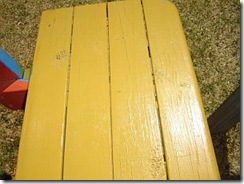This is a cross-post with technoLOTE
 Anne Mirtschin and I were lucky enough to this year be granted Teacher Professional Leave to develop a project we have called ‘ePlanks – Laying the Foundations of a Web 2.0 School.’ Our aim with this project is to get as many staff using various Web 2.0 tools (such as blogs, wikis, podcasts, social networks and social bookmarking sites) as possible to extend their teaching in a way that suits them.
Anne Mirtschin and I were lucky enough to this year be granted Teacher Professional Leave to develop a project we have called ‘ePlanks – Laying the Foundations of a Web 2.0 School.’ Our aim with this project is to get as many staff using various Web 2.0 tools (such as blogs, wikis, podcasts, social networks and social bookmarking sites) as possible to extend their teaching in a way that suits them.
We have outlined several stages that we think would be important when encouraging staff to jump into the Web 2.0 world. Our eplanks are:
Plank 1 – Understanding what the Web 2.0 World is / means and why you would use it
Plank 2 – CyberSafety
Plank 3 – Digital Media and Copyright
Plank 4 – Creating Your Own Online Space / Creating Online Student Spaces – Blogs and Wikis
Plank 5 – Adding Your Voice / Adding Student Voices- Podcasting
Plank 6 – Joining Networks and Making Connections
Plank 7 – No Walls on this Classroom – mLearning
Plank 8 – Keeping the Learning Going – Web 2.0 PD for Busy Teachers
You can find more details about these steps on the ePlanks wiki.
As part of this project we went to see Will Richardson speak at the SLAV conference on Monday 12th May. Will is a world-renowned leader in the field of Web 2.0 in schools and it was great to hear him speak. The main message I took away from his session was that Web 2.0 is not about the tools, it is about the powerful connections that can be made with those tools. These connections then lead to really powerful learning experiences for our students. These connections can make it possible for you to bring someone into your classroom who knows more about what you are trying to teach than you do – whoever they are and whatever age they are. Comments left on a blog can lead to further conversation and the discovery of more information about what you are trying to teach for example.
Here are the points Anne noted from what Will Richardson said:
These are all really important points for us to remember as we progress with our project. I especially like that it has been pointed out that teachers are more important than ever before. Hopefully this will motivate some teachers to take a few more risks and at least get up to their knees in the river/ocean that is the world of Web 2.0.
Look out for plenty more posts about laying the ePlanks – and the ePlanks podcast!
